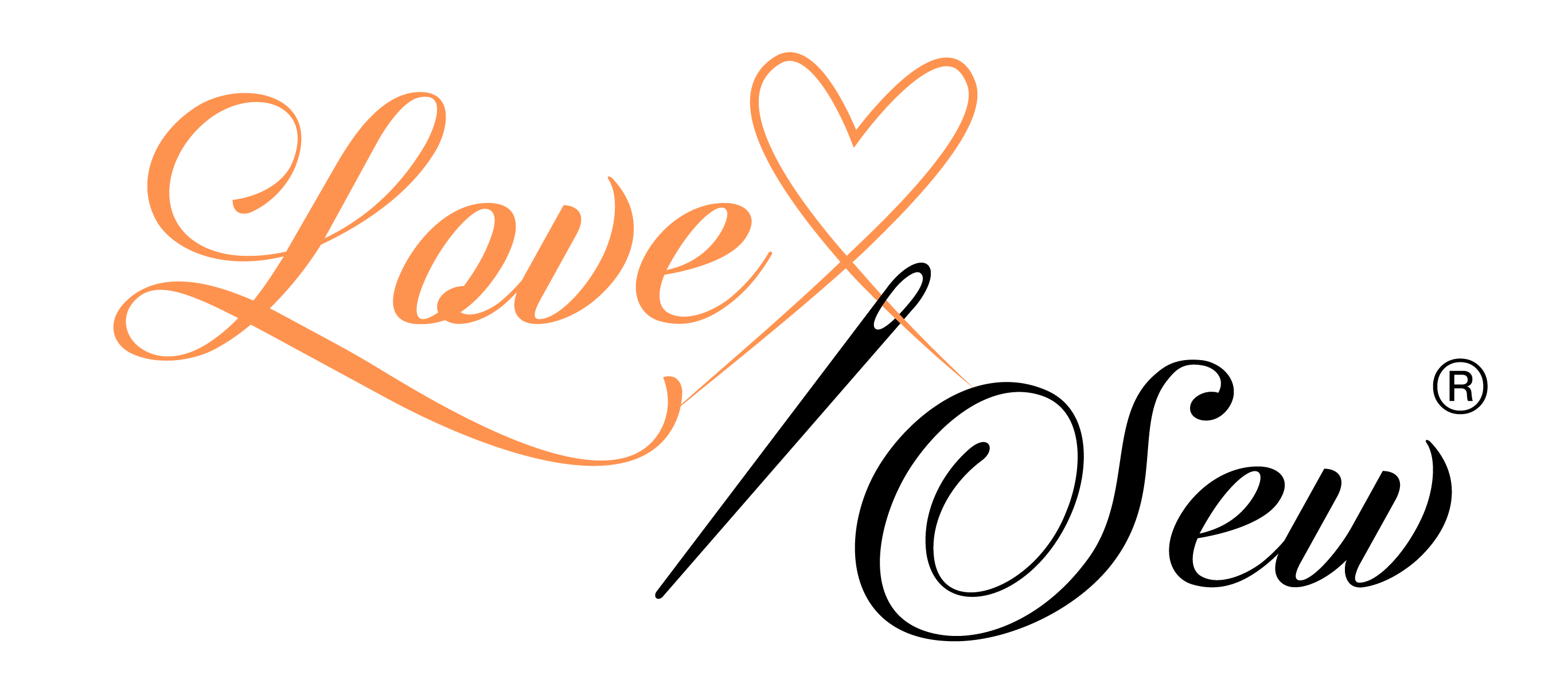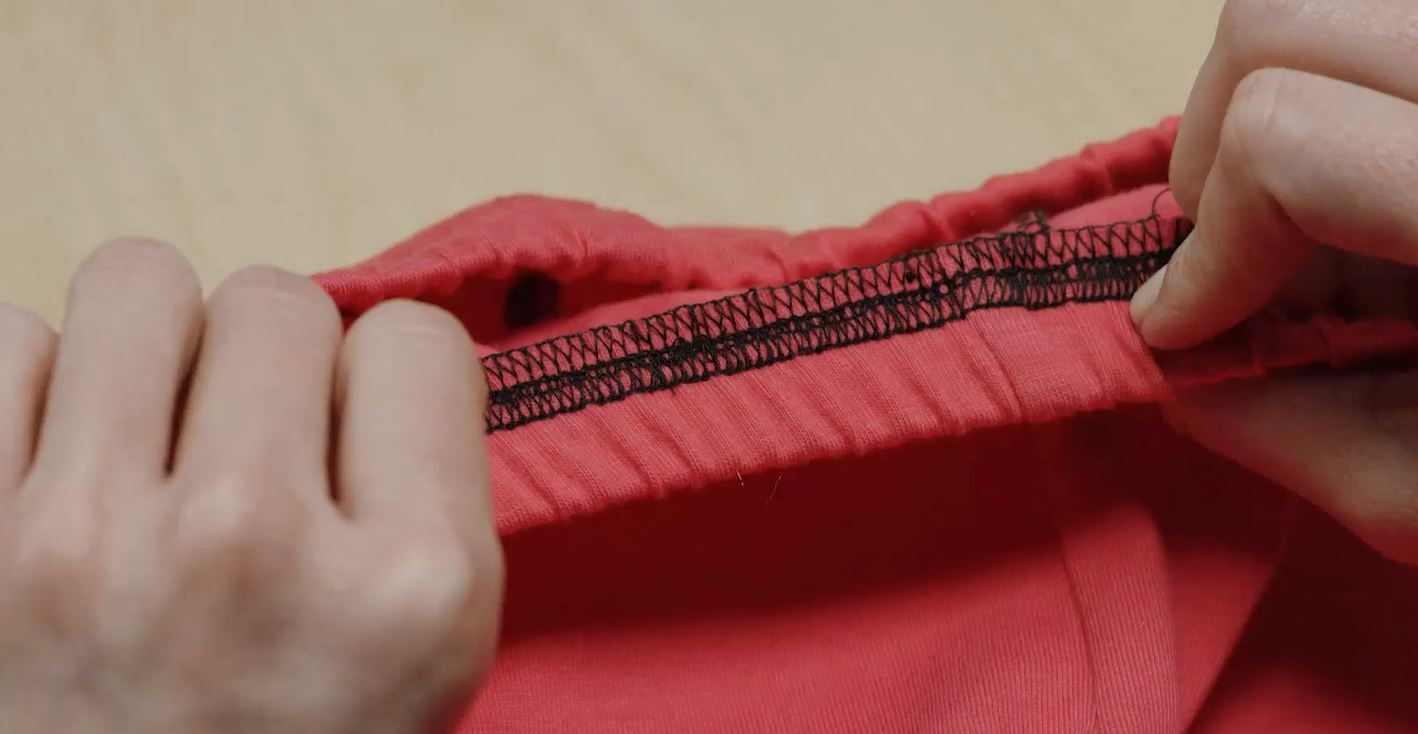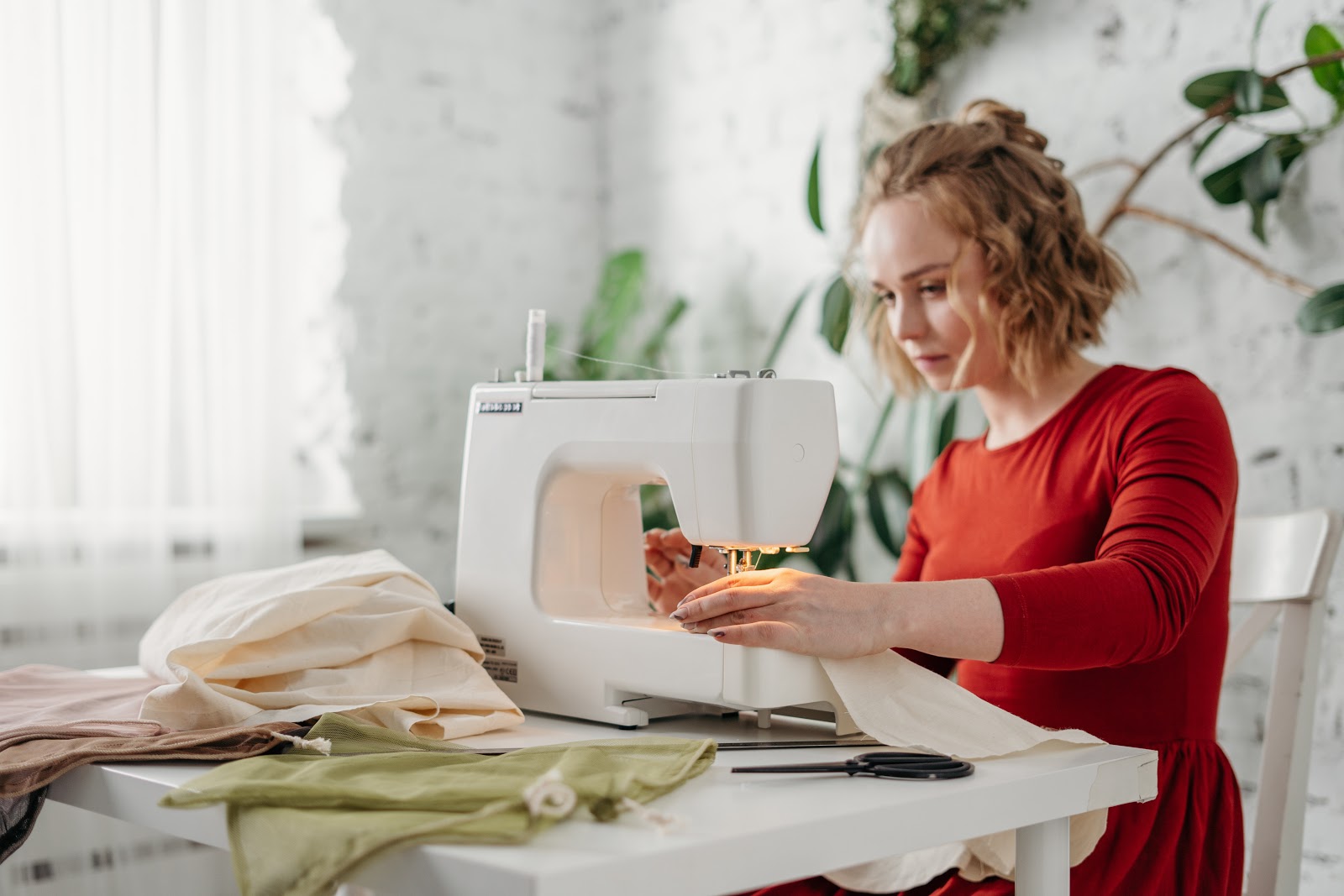Elastic is a wonderful tool to use when making garments. It’s commonly used for waistbands, but can also be used to create fitted sleeve cuffs and collars, and to cinch in other areas of a garment. There are many different types of elastic, and the type you select will depend on a few factors, such as the method of elastic sewing you use, the area of the garment it’s being used on, and the desired look you want to achieve.
Before the invention and patenting of elastic by English inventor Thomas Hancock in the early 19th century, people relied on buttons, belts, and other fasteners to keep clothes secure. This was particularly troublesome for garments like socks and underwear, which often required garters just to keep them up. During the Second World War, there was an elastic shortage, and the product had to be strictly rationed. Women’s underwear was one of the only garments to retain the use of elastic during this time.
Today, elastic can be found in a variety of garments and is used to create a comfortable, fitted silhouette. In this article, we’ll break down the different types of elastic you can use, the two main methods for sewing with elastic, and we’ll give you some tips and tricks along the way that will set you up for elastic success.
Types Of Elastic
There are a few main types of elastic you’ll encounter in the craft store. We’ll break down the different types below and tell you which types work best for which projects.
Braided Elastic
Braided elastic is very lightweight, and it narrows when it’s stretched. It works best when used with a lightweight fabric or on areas that won’t get much stretch, like a sleeve cuff. Over time, braided elastic begins to lose its elasticity when stretched to its limits.
This should only be used in a channel or an elastic casing, as it loses all its stretch when sewn directly onto fabric (we’ll go over these methods in detail later on.)
Knitted Elastic
Knitted elastic is soft, has a lot of movement, and is very versatile. It can be used in a channel or sewn directly onto fabric. Since it’s extremely soft, it can have direct contact with skin and works well on things like waistbands. Knitted elastic works well for medium and lightweight fabrics.
Woven Elastic
Woven elastic is thick and strong, but not as soft as knitted elastic. It works well for heavy fabrics, like canvas or velvet. It can be used directly on fabric or used in a channel or casing.
Elastic Thread Or String
Elastic thread/string is extremely thin, lightweight, and versatile. It’s great for gathering fabric, creating a ruched or shirred effect. It’s even thin enough to be used in the bobbin of your sewing machine. It works best when used with lightweight fabrics and is excellent for ruching.
Clear Elastic
Clear elastic is very thin and durable, and, as the name suggests, it’s clear. It can be stretched up to four times its size, making it great for any sort of activewear. Clear elastic is great for adding stability and elasticity to seams that risk coming apart over time, like shoulder seams.
Fashion Elastic
Fashion elastic comes in a variety of prints and colors and is designed to be seen on the outside of the garment, like in a waistband on a skirt. Fashion elastic comes in a variety of thicknesses. It is meant to be sewn directly onto the fabric, so the pattern is visible.
Two Methods For Sewing Elastic
When it comes to sewing elastic, there are two main methods: sewing it directly onto the fabric or sewing a channel/elastic casing and feeding the elastic through. We’ll break down how to do both methods and the pros and cons of each.
Sewing Elastic Directly To A Garment
This method works best to create a gathered effect with your fabric and works well with knitted elastic, woven elastic, and fashion elastic.
The first step is to measure and cut the length of elastic you’ll need. This is best done by measuring the body part the elastic will sit on, such as the waist, the cuff, the chest, etc. Once you have this measurement, decide how snugly you want the elastic to fit. For a looser fit, measure and cut the elastic the exact length of the body part. For a tighter fit, subtract 2 to 4 inches from the measurement and cut the elastic to that length.
Next, pin or clip your elastic to your fabric. Since the length of the unstretched elastic is likely shorter than the length of your fabric, it’s important to pin the elastic in intervals. For example, pin the elastic directly at the center point of both the elastic and the fabric. Then, stretch the end of the elastic to the end of the fabric and pin it there. Repeat on the other sides. Add pins between the midpoint and the ends as needed. This ensures the elastic is evenly distributed across the length of the fabric.
Now, you can begin sewing. Ensuring that your elastic is pinned to the inside of the fabric (unless it’s a fashion elastic intended to be seen,) begin sewing from the midpoint. A sewing machine works best when sewing elastic. Sew the elastic to the fabric using a zigzag stitch, and pull the elastic taut, ensuring that the elastic surface is flush with the fabric.
Another method you can use is to sew the ends of the elastic together first, creating a loop. This works well for something like a waistband. Stitch the ends together with a zigzag stitch, and ensure you’re backstitching a few times, so it’s secure. Then, pin the band to the fabric at four evenly spaced points. This will distribute the elastic evenly.
If you wish to conceal the elastic fully, you can fold the edge of the fabric over and stitch it closed. This can make your work look cleaner and ensure the elastic doesn’t rub up against your skin.
Creating A Casing Or Channel To Sew Elastic
This next method is perfect for projects where you want the elastic to lie flat and not gather. This method works well with braided, knitted, woven, and clear elastics.
First, either finish the raw edge of your fabric or simply fold it over. Then, determine the width your casing needs to be. To do this, measure the width of your elastic, then add ¼ inch. Measure this length from the distance of your finished edge, and mark it with a pencil. Fold the fabric at this mark, and iron it flat.
Now, sew the folded fabric down as close to the edge as possible. If you sew too close to the top, the elastic may not fit through the channel. Now, you can begin threading the elastic through either of the two ends of the casing.
If you’re making a circular project like a skirt, leave an opening large enough for the elastic to pass through. The easiest way to feed it through is to attach the elastic to a safety pin and bunch up the fabric to pull the pin through. Make sure you don’t lose the tail of the elastic. Once you’ve fed the elastic through, both ends can be sewn in place at the ends of the casing.
Sewing a channel for your elastic to feed through is very similar. The only difference is that the channel is created with a separate piece of fabric. This method works well for inserting elastic into the middle of a garment, like in the waistband of a dress.
To begin this method, cut a strip of extra fabric that is wide enough for your elastic to feed through. Then, pin the wrong side of your channel fabric to the wrong side of your garment fabric. Sew along both edges of the channel, making sure to leave an opening to feed the elastic through if you’re working with a circular garment. Finally, feed the elastic through with a safety pin, just like with the casing method. Sew the elastic together, and close the opening.
Conclusion
There are so many different types of elastic and so many different methods to incorporate elastic into garments. Elastic provides structure, stretch, and stability and can help you create a gorgeous, flattering silhouette. Before you begin a project and purchase the elastic, make sure to do your research to figure out which method and which type of elastic works best for your garment. An elastic that works well in the collar of a shirt may not be right for the waistband of a skirt.
Just like our name suggests, we here at Love Sew are passionate about all things sewing. We publish helpful tutorials on our blog with a plethora of tips and tricks for all sewers, from novices to old pros. We also have an extensive catalog of neat sewing gadgets that’ll make your next project a cinch. Make sure to visit our website, and let us help you along on your sewing journey.
Sources:
The History of Elastic and Rubber Bands | Versteegde
How Clothes Rationing Affected Fashion In The Second World War | iwm.org




Leave a comment
This site is protected by hCaptcha and the hCaptcha Privacy Policy and Terms of Service apply.